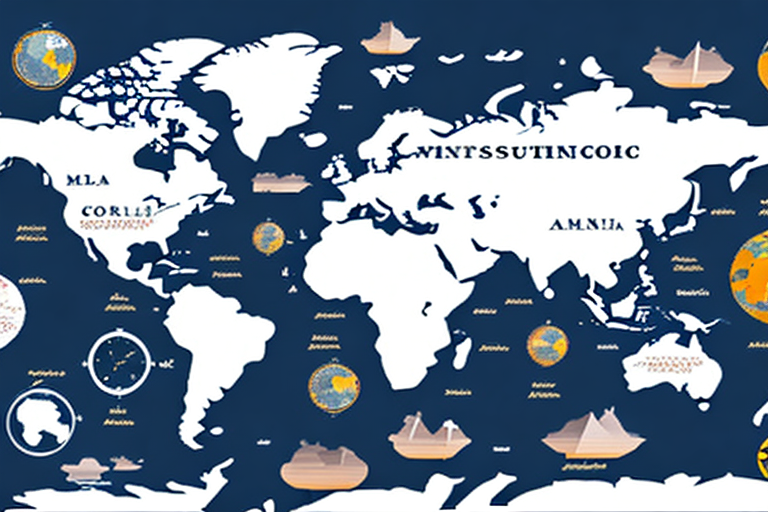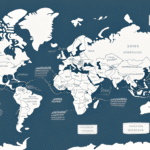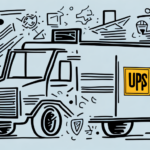Introduction to Time Zone Management in UPS Operations
Efficient package delivery across multiple time zones is a cornerstone of UPS's global logistics success. Understanding and managing time zone differences is essential to ensuring timely deliveries, optimizing routes, and maintaining customer satisfaction. This article delves into how UPS navigates the complexities of time zones, the technologies employed, and best practices for shipping across different regions.
The Significance of Time Zones in UPS Logistics
What Are Time Zones?
Time zones are regions of the Earth divided by longitudes, each having a standard time offset from Coordinated Universal Time (UTC). Typically, each time zone spans 15 degrees of longitude, corresponding to a one-hour time difference. Accurate time zone management is crucial for UPS to synchronize delivery schedules, transportation logistics, and operational workflows across diverse geographic areas.
Impact on Delivery and Transit Times
Time zones directly influence delivery windows and transit durations. By accounting for local time variations, UPS ensures that packages arrive within scheduled time frames, enhancing reliability and customer trust. Mismanagement of time zone differences can lead to delays, increased operational costs, and reduced service quality.
Strategies for Managing Deliveries Across Time Zones
Advanced Routing and Scheduling
UPS employs sophisticated routing algorithms that factor in time zone differences to optimize delivery routes. This ensures that packages are transported efficiently, minimizing transit times and avoiding delays. The utilization of UPS’s proprietary routing technology helps streamline operations across various regions.
International Routing Centers
To handle the complexities of international shipping, UPS has established numerous routing centers globally. These centers coordinate time zone adjustments, customs clearance, and local delivery operations, ensuring seamless cross-border shipments.
Technological Innovations Facilitating Time Zone Navigation
Real-Time Tracking Systems
UPS's advanced tracking systems leverage GPS and satellite technology to monitor packages in real-time. This allows for dynamic adjustments to delivery schedules based on current location and time zone considerations, enhancing delivery accuracy.
Artificial Intelligence and Predictive Analytics
Artificial Intelligence (AI) plays a pivotal role in predicting potential delays and optimizing delivery routes. By analyzing historical data and current conditions, UPS can proactively reroute packages to mitigate time zone-related delays.
- AI-driven route optimization reduces delivery times by an average of 10%
- Predictive analytics enhances on-time delivery rates to over 95%
Source: Forbes Tech Council
Challenges of Delivering Across Time Zones
Customs Clearance and Documentation
International shipments must navigate varying customs regulations, which can be complicated by time zone differences. UPS utilizes automated systems and local expertise to expedite customs clearance, reducing delays caused by time zone discrepancies.
Weather and Environmental Factors
Extreme weather conditions can disrupt delivery schedules, particularly when coordinating across multiple time zones. UPS integrates real-time weather data into its routing systems to anticipate and mitigate the impact of adverse weather on deliveries.
Best Practices for Shipping with UPS Across Time Zones
Accurate Shipping Information
Ensuring precise shipping details, including correct zip codes and addresses, is vital for timely deliveries. UPS recommends double-checking all shipping information to prevent delays caused by incorrect time zone assignments.
Utilizing UPS Shipping Tools
UPS offers various tools to assist customers in managing time zone-related challenges:
- Time in Transit Calculator: Estimates delivery times based on origin and destination time zones.
- UPS My Choice: Provides real-time updates and allows for delivery adjustments based on time zone differences.
International Shipping Considerations with UPS
Time Zone Differences in Global Shipping
Shipping internationally involves navigating a myriad of time zones, each with its own set of regulations and delivery expectations. UPS’s global network is designed to handle these variations efficiently, ensuring that packages are delivered promptly regardless of destination time zones.
Customs Clearance Expertise
UPS employs specialized customs agents and utilizes advanced software to manage duties and taxes, streamlining the international shipping process and minimizing delays caused by time zone differences.
The Future of Time Zone Management in UPS Operations
Embracing Emerging Technologies
UPS continues to invest in emerging technologies such as blockchain for enhanced transparency and further AI advancements to improve predictive accuracy in delivery scheduling across time zones.
Sustainability and Efficiency
As part of its commitment to sustainability, UPS is optimizing routes to reduce fuel consumption and emissions, which also contributes to more efficient time zone management and quicker deliveries.
Conclusion
Effective time zone management is integral to UPS's ability to deliver packages reliably and efficiently across the globe. Through advanced technology, strategic routing, and best practices, UPS continues to navigate the challenges posed by varying time zones, ensuring that customers receive their shipments on time, every time.




















